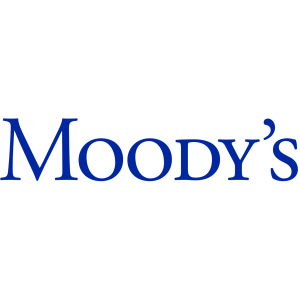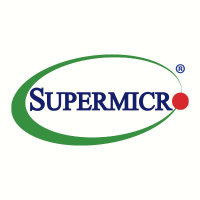
Sartorius AG
XETRA:SRT


| US |

|
Berkshire Hathaway Inc
NYSE:BRK.A
|
Financial Services
|
| US |

|
Moody's Corp
NYSE:MCO
|
Financial Services
|
| US |

|
Bank of America Corp
NYSE:BAC
|
Banking
|
| US |
S
|
Seritage Growth Properties
NYSE:SRG
|
Real Estate
|
| US |

|
Freeport-McMoRan Inc
NYSE:FCX
|
Metals & Mining
|
| US |

|
American Express Co
NYSE:AXP
|
Financial Services
|
| KR |

|
Coupang Inc
NYSE:CPNG
|
Retail
|
| CA |

|
Teck Resources Ltd
NYSE:TECK
|
Metals & Mining
|
| CN |

|
Alibaba Group Holding Ltd
NYSE:BABA
|
Retail
|
| US |

|
Coca-Cola Co
NYSE:KO
|
Beverages
|
| US |

|
Chevron Corp
NYSE:CVX
|
Energy
|
| US |

|
KBR Inc
NYSE:KBR
|
Professional Services
|
| US |

|
Occidental Petroleum Corp
NYSE:OXY
|
Energy
|
| US |

|
Micron Technology Inc
NASDAQ:MU
|
Semiconductors
|
| US |

|
T-Mobile US Inc
NASDAQ:TMUS
|
Telecommunication
|
| US |

|
PayPal Holdings Inc
NASDAQ:PYPL
|
Technology
|
Utilize notes to systematically review your investment decisions. By reflecting on past outcomes, you can discern effective strategies and identify those that underperformed. This continuous feedback loop enables you to adapt and refine your approach, optimizing for future success.
Each note serves as a learning point, offering insights into your decision-making processes. Over time, you'll accumulate a personalized database of knowledge, enhancing your ability to make informed decisions quickly and effectively.
With a comprehensive record of your investment history at your fingertips, you can compare current opportunities against past experiences. This not only bolsters your confidence but also ensures that each decision is grounded in a well-documented rationale.
Do you really want to delete this note?
This action cannot be undone.

| 52 Week Range |
168
288
|
| Price Target |
|
We'll email you a reminder when the closing price reaches EUR.
Choose the stock you wish to monitor with a price alert.

|
Berkshire Hathaway Inc
NYSE:BRK.A
|
US |

|
Moody's Corp
NYSE:MCO
|
US |

|
Bank of America Corp
NYSE:BAC
|
US |
|
S
|
Seritage Growth Properties
NYSE:SRG
|
US |

|
Freeport-McMoRan Inc
NYSE:FCX
|
US |

|
American Express Co
NYSE:AXP
|
US |

|
Coupang Inc
NYSE:CPNG
|
KR |

|
Teck Resources Ltd
NYSE:TECK
|
CA |

|
Alibaba Group Holding Ltd
NYSE:BABA
|
CN |

|
Coca-Cola Co
NYSE:KO
|
US |

|
Chevron Corp
NYSE:CVX
|
US |

|
KBR Inc
NYSE:KBR
|
US |

|
Occidental Petroleum Corp
NYSE:OXY
|
US |

|
Micron Technology Inc
NASDAQ:MU
|
US |

|
T-Mobile US Inc
NASDAQ:TMUS
|
US |

|
PayPal Holdings Inc
NASDAQ:PYPL
|
US |
This alert will be permanently deleted.
 Sartorius AG
Sartorius AG






 You don't have any saved screeners yet
You don't have any saved screeners yet

Ladies and gentlemen, good day, and welcome to the Sartorius and Sartorius Stedim Biotech conference call on the Q1 results 2019. Today's conference is being recorded. At this time, I would like to turn the conference over to Dr. Joachim Kreuzburg, CEO. Please go ahead, sir.
Yes. Thank you, and welcome, everybody, to our Q1 call 2019. As always, we would like to first walk you through the results for the Sartorius Group for the first quarter of 2019, and then after that, we would like to walk you through the results for Sartorius Stedim Biotech, and then we will have time for questions and answers as well.However, before I hand over to our CFO, Rainer Lehmann, to walk you through the figures in some more detail, I would just like to highlight maybe the key aspects of our results. First of all, we, I think, are really off to or into for a good start into 2019 with strong double-digit growth for both order intake as well as sales and even overproportionate double-digit growth for earnings. Particularly, the Bioprocess Solutions division has shown a very dynamic momentum again. The Lab Products & Services Division, in light of the more challenging economic environment I think has delivered a robust development as well. And based on this, we will discuss that in more detail at the end of our presentation, we confirm our outlook for the full year 2019. Having said that, I now would like hand to -- would like to hand over to Rainer.
Thank you, Joachim. Also welcome to the call from my side, everybody. As always, on Chart #5, we start with an overview of the Sartorius Group KPIs. Sales revenue rose in Q1 to EUR 436 million, which is an increase in constant currencies of 16.8%. 16.6% was the increase in the order intake. And as we always point out, we still have a nice spread between revenue and order intake. As of Q1, this is roughly still EUR 50 million.The strong sales growth also translated through a nice underlying EBITDA. It amounts for Q1 to EUR 114 million, which is an increase of 28.7% and translates to an increase in our EBITDA margin of almost 2 percentage point to 26.2%. Let's keep in mind though that out of those 2 percentage points, I think a good 0.5 percentage points is really attributed to the change of our accounting rules related to the implementation of IFRS 16.Underlying earnings per share also rose by a strong 31% to EUR 0.71 for the ordinary and to EUR 0.72 per share for the preferred.On the next slide, we're going to, as always, look at the regional performance. Here, we see very strong growth in the Americas of 24.7% to EUR 152.4 million. Really could take advantage of that high momentum although, yes, you can argue were the comparables really that high in that region. Nevertheless, very, very happy to see that growth and also a robust performance on the Laboratory Products & Services side.In EMEA, where we are tending to have a higher market share, also happy with actually an increase of revenue of 11.6% in constant currencies. Also here, very solid performance by the Bioprocess Solutions division, but we see a little bit softer development of the LPS side due to the economy.Moving over to Asia Pacific. We can really report that both divisions have really strong growth rates, of course, maybe also driven here by Bioprocess Solutions. If we look on the right-hand side, the regional distribution, where basically in EMEA spread a little bit over 40%; Americas, gaining its share to 35%; and Asia Pacific, almost 1/4 of our business is done in that region.We have to look into our divisional performance. I'm going to start on Slide 7 with the Bioprocess Solutions. We really see a very strong performance in demand, all product categories and regions and also customer segments, to be honest. If I start with the left -- with the order intake, in constant currency, it grew 21.1%, really strong growth drivers here, an increase in our consumable business, but also the -- our bioreactor business, especially -- specifically in the Asian region. Order -- sorry, strong order intake. The revenue increased by almost 21% in constant currencies, that was fueled, of course, by the high order intake already in the Q3 and Q4, which we anticipate in this regard. Let's still keep in mind that the effect that we anticipated for the overall year due to the adjustment or with the modified setup of the cell culture media business, we have not seen that yet in Q1. But we are anticipating that over the next 3 quarters, this will actually materialize. So therefore, as we have anticipated, we expect a dilution for the Bioprocess Solutions division from this effect of 3 percentage points. This one, we have not seen in Q1. So therefore, instead of a guidance of 8% to 12%, you almost would have to think about -- add these 3 percentage points, and it would be at 11% to 15%. So strong, strong performance overall.On the right-hand side, if you look at the underlying EBITDA margin, increase of 2.2 percentage points in nominal values. EBITDA amounted to EUR 94 million, which is an increase of 34%. But also keep in mind that we have here changed to the -- an impact from the change in the accounting rules, but nevertheless, the strong operational improvements were really attributed to economies of scale fueled by the consumable business. But also keep in mind, we actually had also some larger systems orders in Q1, respectively.On the next slide, on Slide 8, we're having a little bit more details on the Laboratory Products & Services Division. We clearly see here a robust performance and to be also in line with our expectations. Order intake, we are confronted with relatively tough comps in that segment. An 4.4% increase, to EUR 116.8 million order intake, shows also, in our opinion, the weaker overall economic environment. On the sales revenue side, we could increase by almost 6% our revenue in constant currencies to roughly EUR 110 million. Strong contribution, though, here from our -- from the Americas.Margin, still not completely satisfied, to us, but increase of 8.2% to almost EUR 20 million, which -- the underlying EBITDA margin for this division is slightly above previous year and moved to 18.1%. Also here, we, of course, have a positive effect from the accounting change related to IFRS 16.On the next slide, let's have a look at some more financial indicators. Driven by a really strong underlying EBITDA of EUR 114 million, we could translate that into a strong net operating cash flow of EUR 106 million. So net investing cash flow amounted to EUR 55 million and -- which translates to a CapEx ratio at the end of the year of 12.9%. Here I also would like to explain that compared to previous years, we changed our definition of the CapEx ratio in 2019 also resulting as a change of the IFRS 16. We are now basing our investment ratio on a cash flow-based investment to make it more comparable. If we would've done that already in Q1 2019, investment ratio would have been there 11.1%. So it does not have any material change and will also not affect our outlook for 2019.Of course, we should not forget to mention the strong underlying net profit increased by 31% to EUR 48.6 million, and our reported net profit increased by 42% to almost EUR 38 million for the first quarter.On Slide 10, we're having a look quickly at the equity ratio. Also here, we see a little impact of the change in accounting rules, a good 0.5 percentage points actually attributed to that. Nevertheless, a very strong ratio of 36.8%. Our net debt amounts to EUR 970 million. Also keep in mind here, it has really roughly EUR 50 million included also due to the capitalization of the leases and, therefore, the liabilities resulting for these leases. It does not have a real -- or the effect on the indebtedness ratio is completely neglectable by this increase, so we're happy with the 2.2. And if you look on the right-hand side of the chart, you see that we are constantly improving that indebtedness ratio and is in line with our expectations. And with those facts for the Q1, I'll hand it back to Joachim, who is going to talk about the outlook for 2019.
Thank you, Rainer. Yes, just a few words also on the outlook for 2019. I said at the very beginning already, we confirm our perspective for the full year. Let's walk through the table, maybe starting from the bottom. For the Lab Products & Services Division, we continue to expect a top line growth of 5% to 9% in constant currencies and an increase of our underlying EBITDA to slightly above 20%. And here, it'll be a good portion of effect coming from IFRS 16 that has been mentioned before and an operational margin increase of roughly 0.5 percentage points compared to the 18.5% for the full year 2018.Maybe coming back to the result that we have reported in also Q1 in 2019 for LPS, well, we haven't seen an increase of our EBITDA margin yet. This is very much because we have expanded our sales organization to some extent, also to some degree in the bioanalytics area. That means we do have and we continue to have positive economies of scale also in the LPS division for sure, but yet because of this expansion of our sales force, one cannot see that in the Q1 results, but we are confident that if we manage to achieve the top line development that we are aiming for, we then should be also able to translate that into this additional profitability for the division.For Bioprocess Solutions, that has been mentioned before by Rainer as well, the expectation is 8% to 12%, which includes the dilution coming from the different setup of our relationship with Lonza in the cell culture media business by 3 percentage points. That really has to be kept in mind when interpreting the very strong top line development in Q1 2019. On top of that, quite weaker comps for Q1 than we will see them for the coming quarters. But of course, we clearly also would say, we are pleased with the development in Q1. So I think we are off to a good start rather at the upper end of our expectations so far, but not in a position that we would like to modify our guidance for the full year so early in the year. I think we all have seen in the previous 4, 5 years that the markets are a little bit more volatile, in a positive sense to some degree because of very strong, positive drivers that we see by the additional demand coming from Asia, particularly China investments into biosimilar manufacturing capacities and other aspects, but again this makes this business a little bit more volatile, a little bit more difficult to predict in detail. And therefore, we feel that, as we have done it always in the past, we should revise our guidance only based on half year figures and not earlier than that.For the profitability, we are shooting for 29.5%, slightly above that figure actually, and we believe that we are in a good position to achieve that based on what we have seen so far this year. And this then should sum up to a top line development for the group of plus 7% to 11% in constant currencies and an increase of our underlying EBITDA margin to slightly above 27%. CapEx ratio has been mentioned Rainer before, also in regards to this very small effect coming from the different way to calculate it based on cash flows now, which makes it actually also easier to follow that and to link it back to our cash flow table that we always provide you with as well. We continue to predict 12%, yes. We are about to complete major capacity expansion, particularly, the one in Yauco, which should be pretty much completed by mid of this year.So far on the Sartorius Group, I would now like to walk you just briefly through the figures for the first quarter actually, I think, for some copy and paste issue, we have some wrong headlines here on the agenda. Apologies for that. So Q1 2019 for SSB, briefly, without repeating all the comments that have been made for BPS already, so really strong first quarter. Sales revenue up by a good 19%; order intake up by almost 19% in constant currencies; order intake, also in absolute figures, quite substantially above sales revenue. So really positive momentum going forward. Overproportionate increase of the underlying EBITDA so that the margin is 2.3 percentage points higher than 1 year ago. And earnings per share is up by almost 1/3. So -- and the drivers, I think I don't have to repeat what has been said before, pretty much the same applies to the regions. We are happy being able to say, again, that all regions have shown significant double-digit growth on the top line, and we believe that with the Americas being such an important market, this expansion is a very positive one. And Asia Pacific, based on the continued strong growth over a couple of years now already, the growth of almost 17% is just as positive as the one in Americas, so to say. And then we have also given our high market shares there.Then on cash flow. Quite -- most of the comments that Rainer had made before for the group apply also for Sartorius Stedim Biotech. We see a strong underlying EBITDA, which also then drives in conjunction with relatively low extraordinaries and also a not-too-different financial result from the period earlier to a -- not only to a strong underlying net profit and reported net profit, but also to strong operating cash flow, net investing cash flow because of the reason that I mentioned before, still a little bit higher than Q1 last year. However, CapEx ratio absolutely in line with our full year projection. And as a result from this, our overall financial position remains very strong and robust, equity ratio down quite to some extent because of the expansion of our balance sheet following IFRS 16. Net debt, even lower than at the same time a year ago, even though of our quite intense investments, and the same applies to the net debt to underlying EBITDA, standing now at 0.3.So in the outlook, for all the reasons that I tried to elaborate on the earlier, we confirm as well. So sales revenue, we project at 7% to 11% because of the fact that the new setup for the cell culture business not yet had much of an effect in Q1. We will see how that materializes further on in this year -- during this year, and we believe that we are off to a good translation of our top line growth into additional profitability so that we also underline our projection to achieve slightly more than 1 percentage point of margin expansion for the full year. So thank you very much for your interest and listening so far, and now we would be happy to receive your questions.
[Operator Instructions] The first question comes from the line of Paul Knight from Janney.
Congratulations on the quarter. And regarding your high United States growth, do you think that you're taking market share? Or is it the nature of this U.S. market right now that's driving that high level of growth?
We do believe that our growth for Q1 is quite a bit higher than, I think, any realistic expectation for the market growth can be. But however, I think we should keep in mind that this is just 3 quarters -- 3 months, and 1 quarter only, so I think one should not always repeat that. However, it's an explicit goal of ours to continue expanding our market share in North America, and we still have quite some room to achieve this goal. So I would say, it's probably 3 factors: one is the market, for sure, is a healthy one and expanding nicely; the second one is yes, we should continue gaining market share; and the third one is, well, just 3 months and probably not a good proxy for anything that one should expect for the full year.
And then lastly, on the European market demand on the analytical instrument part of the market, can you talk what was the tone like in the quarter just finished?
Yes, I mean, we have seen Europe slowing down last year to quite some extent, and we still see that main markets in Europe like Germany and France and also the U.K. are not growing very strongly at the moment. Within that environment, we believe that we are doing quite well. And we do achieve growth in Europe. Of course, it's -- quite some of our -- most of our direct competition doesn't report figures and very often, at least not in such detail so that we could compare with them very well. But we believe we are doing well in Europe in, again, a little bit weak -- or quite some -- to some extent weaker market than in the years '16, '17, for example.
Next question comes from the line of the Delphine Le Louet from Societe Generale.
And congratulations for this results. I was willing to get more insights regarding the growth and, specifically, the mix in the U.S. The reason for that is the last time you had such a growth in the U.S. and a breakdown in term of wait in between the region, you had a tremendous jump in term of EBITDA for the region. And so I was questioning myself: is it a question of these big units that you've been selling and probably at a certain discount which makes the mix a bit less separable and which could have possibly explained the good uptake that we've seen but probably not as good as expected considering the underlying growth in the U.S.?
Yes. So a very good point. So actually, what we see to quite some extent across the board and across the geographies, but also, for the U.S., indeed, is that we see both. We see a very healthy growth for our consumables business with, therefore, strong margins, very attractive incremental margins, but we do also see quite a number of bigger projects. And we have to say we are quite happy also to win such orders. Even though, indeed -- not because of discounting them very much, but simply because of the nature of this business and the nature of our setup of our business in those product segments, the margins are lower. because we basically are concentrating on the assembly, the design, for sure, the software component of such instruments or larger systems and not so much on the manufacturing of the different components, and therefore, the margin of course, for such big project is limited and is so to say then diluting this very strong effect from the strong growth of our consumables business. However, why am I saying, or why are we saying that we are happy with this? Because, a, we are typically able to convert such projects into long-term, additional consumables business. That of course, happens with a certain time gap later only, which is clear because such systems need to be installed and qualified and up and running. But it's nevertheless, of course, an element of our long-term top line growth with healthy margins. And the second one -- the second aspect more specifically for the U.S. because, you're right in asking for that, it also played the role and plays a role at the moment in the U.S. In the past, we typically have been much stronger in winning such project orders in Asia, in particular, but also in Europe and less so in North America. And the fact that we are now more successfully selling such, and we call them, internally integrated solutions also in the U.S. is quite a positive one. So that I would say fully accepting your comment in regards to the translation of our top line growth into profitability that when we see the full picture, we are quite confident -- are very confident in saying that the fundamental mechanics of our business in regards to economies of scale is fully intact.
Next call is from the line of Markus Gola from MainFirst Bank.
Please apologize if some of them have been stated already. I just joined late from a longer conference call. So my first one would be on the split of your very strong order intake in BPS between equipment and consumables. Or you could shed some light what the bigger part is or whether there are some big equipment orders within it? The second one is whether you could quantify the tailwind from the Lonza cell media business, which you had in BPS in Q1. And the last one is on LPS. For me, it looks like you started better into the year than initially expected. I just wanted to ask whether you see a higher probability of recovery in this business going into the year compared to when you entered the year.
Yes, thank you very much. So for order intake on bioprocess, first. It's indeed a quite, yes, good mix in regards to the different product segments. We definitely see also a strong order intake for consumables. But indeed also and we expect or we would see that it's a good chance that this continues also going forward that we also see a number of larger projects that we can win. But it's in also the order intake for the first quarter indeed. And I just said before, and I don't know whether you could follow that already, that we are doing quite well in converting such larger-system projects into longer-term consumables business. So therefore, of course, with a certain delay or a certain gap in time between this, but we are happy to have this integrated solutions business as we call it because it really is a very close interaction with our customers and a long-term -- builds long-term customer relationships and again adds momentum to our consumables business long term. But it's really a mix. Strong order intake. So in another words, for example, in filtration in the bag business, but also in the fermentation business where a good portion are such larger systems. On cell culture media business, as we -- you said whether we had tailwind there. Well, we indeed said that for the full year, we do expect a headwind, so to say, or a dilution of our top line growth by 3 percentage points. We also said when we -- the first time communicated our Q1 -- our full year's guidance that we would expect an overproportionate growth in Q1 because of 2 reasons: a, comps were relatively low than we knew before; and the second one that we knew conceptually before what we thought it was difficult for us to quantify how quickly this dilutive effect from the new setup of our cell culture media contract with Lonza would kick in. And as a matter of fact, we haven't seen much of an effect in Q1 yet. So therefore, this dilution didn't play a role, and -- but we still expect this to pretty much kick in, in the further course of the year, but it will be subject to further observation. And if that kicks in later than expected, then we will of course include that into our guidance later this year. So -- but basically, we think this will kick in as expected but not linearly or not all of a sudden at the beginning of 2019. And your third question, I think, was about LPS and how we think about that business. We basically see that clearly from an economic environment point of view, Europe is a more difficult market. We are overproportionately up or above average up in Asia, as it should be our goal and is our goal. We are also on a good path in North America. Again, in North America, this is a -- the region where we have more potential to gain market share and where also the stronger growing bioanalytics business plays a larger role. So therefore also pretty much in line with our expectation. Europe, more difficult economic environment growing there, but a little bit below the average. So I would say, it's pretty much in line with our expectation so far.
[Operator Instructions] There are no further questions at this time. And I would like to hand back to Dr. Joachim Kreuzburg for closing comments. Please go ahead.
Yes. I think that doesn't leave much for us to say here. Thank you very much for your interest. It's maybe -- anyhow a difficult day for such a call, last day before the Easter break. Therefore, we wish you a happy and peaceful and relaxing Easter time. Looking forward to further interactions, latest probably when we publish our Q2 and half year's figures in 3 months' time. All the best. Have a good weekend, Happy Easter time. Take care. Bye-bye.
Ladies and gentlemen, the conference has now concluded, and you may disconnect your telephone. Thank you for joining, and have a pleasant day. Goodbye.